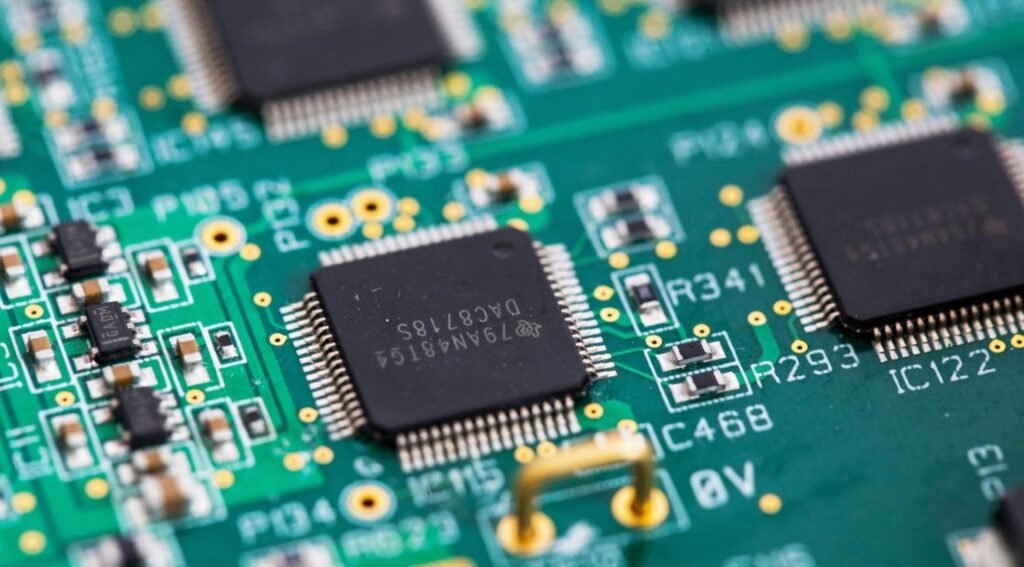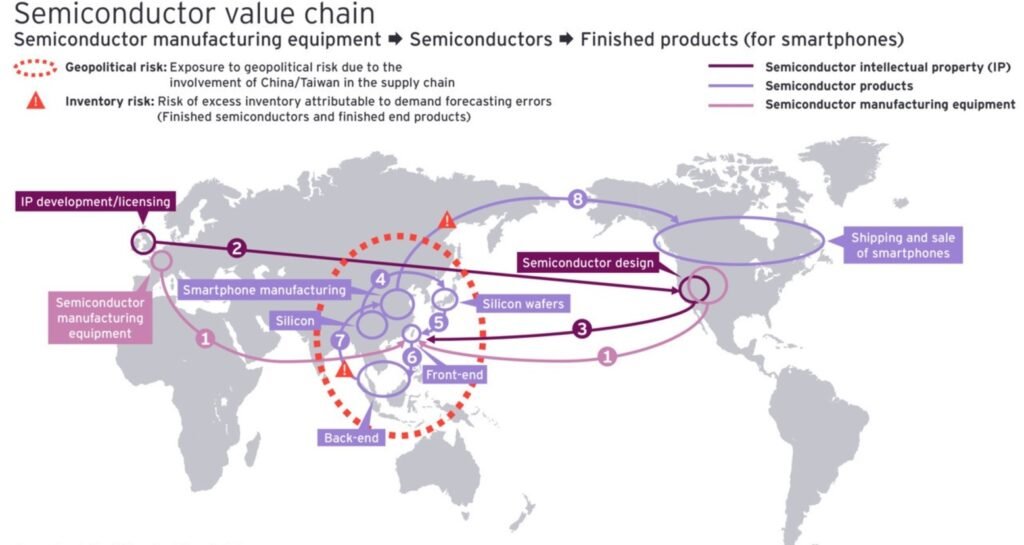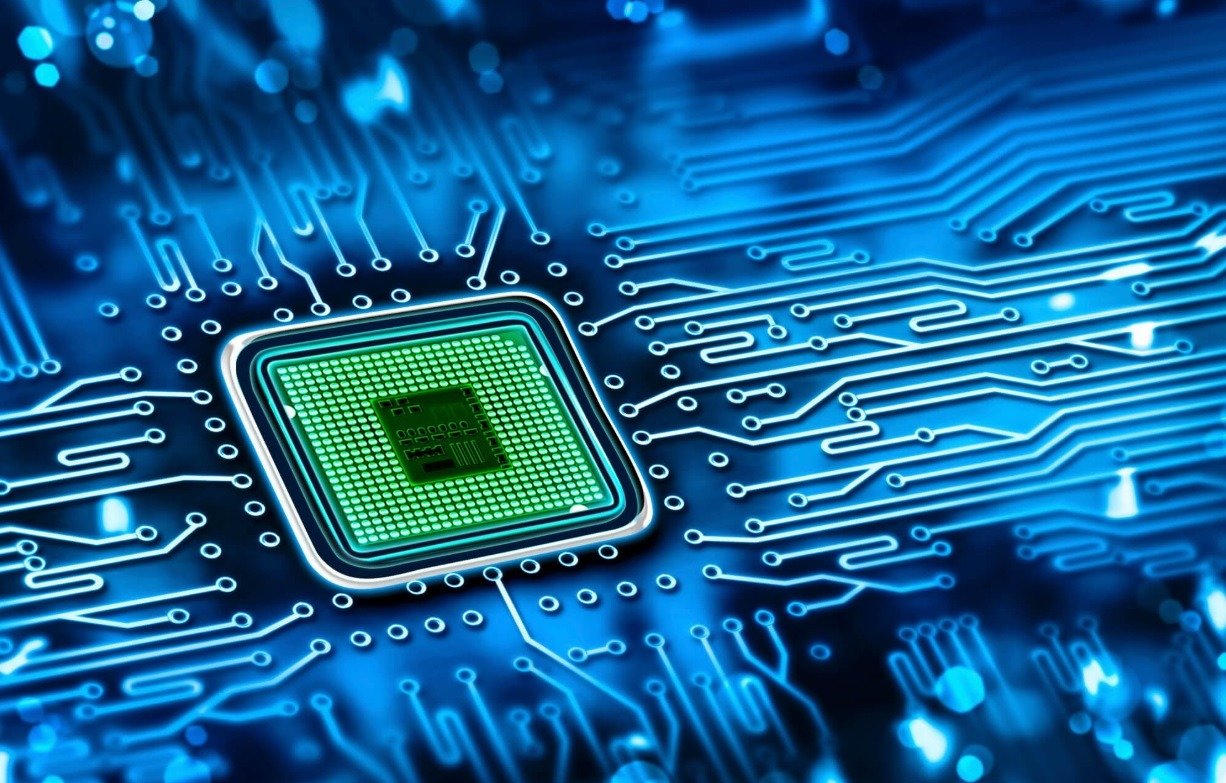Semiconductor Chips Production: Trends Driving the $1 Trillion Market
In today’s tech-driven world, semiconductor chips, also known as microchips, are at the heart of virtually every electronic device. From your smartphone and laptop to advanced medical equipment and self-driving cars, these tiny components power our digital existence. But what exactly is a semiconductor chip? Let’s dive into its basics, functionality, and significance.
Semiconductor chips are the silent heroes powering everything from smartphones to cars, medical devices to satellites. But what exactly is a semiconductor chip, and why is it so crucial in modern life? Let’s dive into the fascinating world of these tiny, yet mighty, marvels.
1. The Role of Semiconductor Chips in a Digital World
Semiconductor chips, often called integrated circuits (ICs), are the cornerstone of modern technology. These tiny components are essential for computing, communication, and electronic devices. As society leans heavily into digitalization, the demand for semiconductors continues to grow.

1. Driving Consumer Electronics
Every smartphone, tablet, and laptop relies on semiconductor chips to function. These chips handle everything from running your favorite apps to connecting to Wi-Fi and taking high-resolution photos. Without them, the digital gadgets we use daily would not exist.
2. Enabling Smart Homes
From voice-activated assistants like Alexa and Google Home to smart thermostats and lighting systems, chips are at the heart of the Internet of Things (IoT). They allow devices to communicate with each other, creating a seamless smart home experience.
3. Powering Artificial Intelligence (AI) and Machine Learning
AI systems rely heavily on powerful chips, particularly Graphics Processing Units (GPUs) and Application-Specific Integrated Circuits (ASICs), to perform complex computations. These chips make it possible for AI to analyze data, recognize patterns, and make predictions at lightning speed.
4. Transforming Healthcare
Semiconductor technology is revolutionizing healthcare through innovations like wearable devices, diagnostic equipment, and telemedicine platforms. These chips ensure precision and reliability, helping save lives and improve patient outcomes.
5. Revolutionizing Transportation
The automotive industry is undergoing a seismic shift with the advent of electric vehicles (EVs), autonomous driving technologies, and connected cars. Semiconductor chips play a pivotal role in vehicle control systems, battery management, and advanced driver-assistance systems (ADAS).
The Global Impact of Semiconductor Chips
The significance of chips extends beyond technology—they are critical to global economies and geopolitics. Countries and corporations are investing billions in research, manufacturing, and supply chain optimization to secure their position in this vital industry.
However, the world has experienced chip shortages in recent years, underscoring their importance. These shortages disrupted industries ranging from automotive to consumer electronics, highlighting how deeply chips are embedded in global supply chains.
Challenges in the Semiconductor Industry
Despite their importance, the semiconductor industry faces several challenges:
- Supply Chain Vulnerabilities: The global nature of chip production makes the supply chain susceptible to disruptions, such as geopolitical tensions or natural disasters.
- Environmental Concerns: Chip manufacturing is resource-intensive, consuming significant water and energy. The industry is now striving for more sustainable practices.
- Rising Complexity: As devices become more powerful, the design and production of chips become increasingly intricate, requiring cutting-edge technologies and substantial investments.
The Future of Semiconductor Chips
Looking ahead, the role of semiconductor chips will only grow. Advancements in quantum computing, 5G networks, and space exploration will demand more powerful and efficient chips. Meanwhile, emerging technologies like neuromorphic computing (inspired by the human brain) promise to redefine the boundaries of what chips can do.
Governments and private companies are also ramping up investments in chip research and production to reduce dependence on external suppliers and foster innovation. This trend points to a future where chips will not only power our devices but also drive economic and technological sovereignty.
2. Trends Driving the Semiconductor Market Boom
1. Explosion of Artificial Intelligence (AI)
AI is reshaping industries and necessitating powerful, specialized chips. From GPUs (Graphics Processing Units) to TPUs (Tensor Processing Units), semiconductors tailored for machine learning and deep learning are gaining traction.

- High-Performance Computing (HPC): AI training models like ChatGPT and autonomous systems require chips with massive computational power.
- Edge AI Devices: Compact chips with AI capabilities are being integrated into edge devices, such as drones and smart cameras.
2. Rise of the Automotive Sector
Automakers are becoming major players in semiconductor demand. Modern vehicles rely on chips for:
- Autonomous Driving Systems: These depend on sensors, AI processors, and radar chips.
- Electric Vehicles (EVs): Battery management, infotainment, and vehicle control units require a significant number of chips.
- Vehicle-to-Everything (V2X): Connectivity solutions add another layer of semiconductor applications.
3. 5G Rollout
5G networks are transforming connectivity, driving demand for chips used in:
- Network infrastructure (e.g., base stations and signal processors)
- Smartphones and other mobile devices
- IoT devices, including smart cities and industrial automation systems
4. Growth in Data Centers
With cloud computing and data-driven businesses on the rise, data centers are demanding energy-efficient and high-performance chips to manage large-scale operations. Advanced processors, memory chips, and cooling systems are at the forefront of this shift.
3. Key Innovations in Semiconductor Manufacturing
1. Transition to Smaller Nodes
The industry is continually pushing Moore’s Law forward by producing chips at smaller process nodes, such as 3nm and 2nm. These smaller chips offer:
- Higher Performance: Improved processing power and speed.
- Energy Efficiency: Lower power consumption, critical for mobile and IoT applications.
- Cost Efficiency: Despite high initial R&D costs, smaller nodes eventually reduce manufacturing costs per chip.
2. Advanced Packaging Techniques
Packaging has become as crucial as the chip itself. Techniques like 3D stacking and chiplet designs enable more efficient and compact semiconductor solutions. These methods are vital for meeting the growing demands of AI and HPC applications.
3. Photonic Integration
Photonic chips use light rather than electrical signals for data transfer, offering significant improvements in speed and energy efficiency. They are emerging as a game-changer for data centers and communication systems.
4. Sustainable Manufacturing Practices
With environmental concerns rising, the semiconductor industry is embracing sustainable practices such as:
- Water recycling in fabs (fabrication plants)
- Renewable energy for powering production facilities
- Development of eco-friendly materials
4. The Geopolitics of Semiconductor Production
Semiconductors have become a focal point of geopolitical tensions. Countries and regions are racing to secure their place in the supply chain, leading to:

1. Government Investments
- United States: The CHIPS and Science Act provides billions in subsidies to boost domestic chip production.
- China: Massive investments in self-reliance, aiming to reduce dependency on foreign technology.
- Europe: Initiatives to enhance semiconductor capabilities, particularly in automotive and industrial sectors.
2. Supply Chain Resilience
Global disruptions, such as the COVID-19 pandemic and trade disputes, highlighted vulnerabilities in the semiconductor supply chain. Companies are diversifying their manufacturing locations to mitigate risks.
3. Strategic Alliances
Collaborations between nations and corporations, such as the U.S.-Japan semiconductor alliance, are shaping the future of chip production.
5. Challenges Facing the Semiconductor Industry
Despite its growth trajectory, the semiconductor industry faces several challenges:
1. Talent Shortages
The sector is grappling with a shortage of skilled engineers and technicians. Addressing this gap requires significant investments in education and training programs.
2. High R&D Costs
Developing advanced nodes and technologies requires enormous financial resources, which can be a barrier for smaller players.
3. Environmental Impact
Chip production is resource-intensive, consuming vast amounts of water and energy. Balancing growth with sustainability is a pressing issue.
4. Intellectual Property and Security Concerns
The theft of trade secrets and cyberattacks on fabs are growing concerns, requiring enhanced cybersecurity measures.
6. Future Outlook: What Lies Ahead?
The semiconductor market is on a clear path to surpass $1 trillion, driven by technological advancements and expanding applications. Key developments to watch include:

- Quantum Computing: Chips for quantum processors could revolutionize industries like cryptography and logistics.
- Neuromorphic Chips: Mimicking the human brain, these chips hold promise for AI applications.
- Expansion of Foundry Services: Companies like TSMC and Samsung will continue dominating, but new players may emerge with specialized solutions.
7. Conclusion: The $1 Trillion Vision
The semiconductor industry is entering an era of unparalleled growth and innovation. From powering AI and 5G to enabling the next generation of automotive and IoT devices, chips are shaping the future. However, achieving the $1 trillion mark requires navigating challenges such as supply chain disruptions, environmental impact, and talent shortages. With global collaboration, strategic investments, and relentless innovation, the industry is poised to meet the world’s ever-growing technological demands.
As we look to the future, one thing is clear: Semiconductor chips are not just components; they are the foundation of a connected, intelligent, and sustainable world.














Post Comment